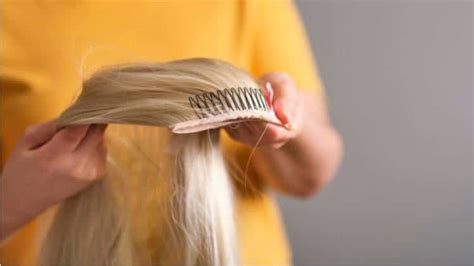Introduction

Hair loss can be a devastating experience for women, affecting their self-esteem and overall well-being. However, with advancements in hair replacement technology, there is a solution that restores confidence and empowers women: the toupee.
What is a Toupee for Women?
A toupee, also known as a hairpiece or wiglet, is a custom-fitted hairpiece that covers thinning or bald areas on the scalp. It is designed to blend seamlessly with the wearer’s natural hair, creating the illusion of a full, voluminous head of hair.
Benefits of a Toupee for Women
- Instant Hair Transformation: Toupees provide an immediate solution to hair loss, transforming a receding hairline or thinning crown into a thick, healthy look.
- Enhanced Confidence: A toupee can restore confidence by giving women the appearance of a full head of hair, which significantly impacts their overall self-image.
- Versatile Styling Options: Modern toupees offer a wide range of styling options, from sleek bobs to cascading curls, allowing women to express their individuality.
- Improved Social Interactions: A toupee eliminates the social stigma associated with hair loss, enabling women to engage in social activities without feeling self-conscious.
Types of Toupees for Women
There are various types of toupees for women, each with its unique features:
- Lace Toupees: Made with a thin, transparent lace base that allows the wearer’s own hair to show through, creating a natural-looking scalp.
- Monofilament Toupees: Featuring a sheer, breathable material that mimics the texture of human hair, offering a comfortable and discreet wear.
- Injected Toupees: Constructed using a mold of the wearer’s head, resulting in a custom fit that conforms perfectly to the scalp.
- Skin Toupees: Made with a polyurethane base that mimics the color and texture of the wearer’s skin, creating an undetectable transition between the toupee and the scalp.
Choosing the Right Toupee for Women
Selecting the most suitable toupee for women involves considering factors such as hair density, texture, color, and desired style. It is recommended to consult with an experienced hair replacement specialist who can provide professional guidance and ensure a perfect fit.
Application and Maintenance of a Toupee for Women
- Application: Toupees are typically attached using adhesive or clips. The application process involves cleansing the scalp, applying the adhesive, and positioning the toupee.
- Maintenance: To ensure longevity, toupees require regular cleaning and conditioning. Avoid using harsh chemicals or heat styling tools, and brush them gently to prevent tangles.
Statistics on Female Hair Loss
According to the American Hair Loss Association, over 50 million women in the United States experience significant hair loss. This number is expected to increase as the population ages.
Common Mistakes to Avoid
- Choosing a Poor-Fitting Toupee: An ill-fitting toupee can create an unnatural look and cause discomfort.
- Over-Styling: Avoid excessive brushing or styling, as it can damage the toupee and reduce its lifespan.
- Ignoring Maintenance: Neglecting regular cleaning and conditioning can lead to tangles, matting, and a reduced lifespan.
Effective Strategies for Choosing and Maintaining a Toupee for Women
- Consult an Experienced Hair Replacement Specialist: Seek professional guidance to ensure a customized and well-fitted toupee.
- Consider Your Hair Texture and Color: Choose a toupee that closely matches your own hair’s texture and color for a seamless blend.
- Follow Proper Maintenance Guidelines: Adhere to the cleaning and conditioning instructions provided by your hair replacement specialist.
- Avoid Over-Styling: Treat the toupee gently and avoid excessive styling to maintain its longevity.
Conclusion
A toupee for women is a transformative solution to hair loss, empowering them to regain their confidence and enhance their self-esteem. With proper care and maintenance, a toupee can provide a seamless and natural-looking solution to hair loss, enabling women to feel beautiful and embrace their true selves.
